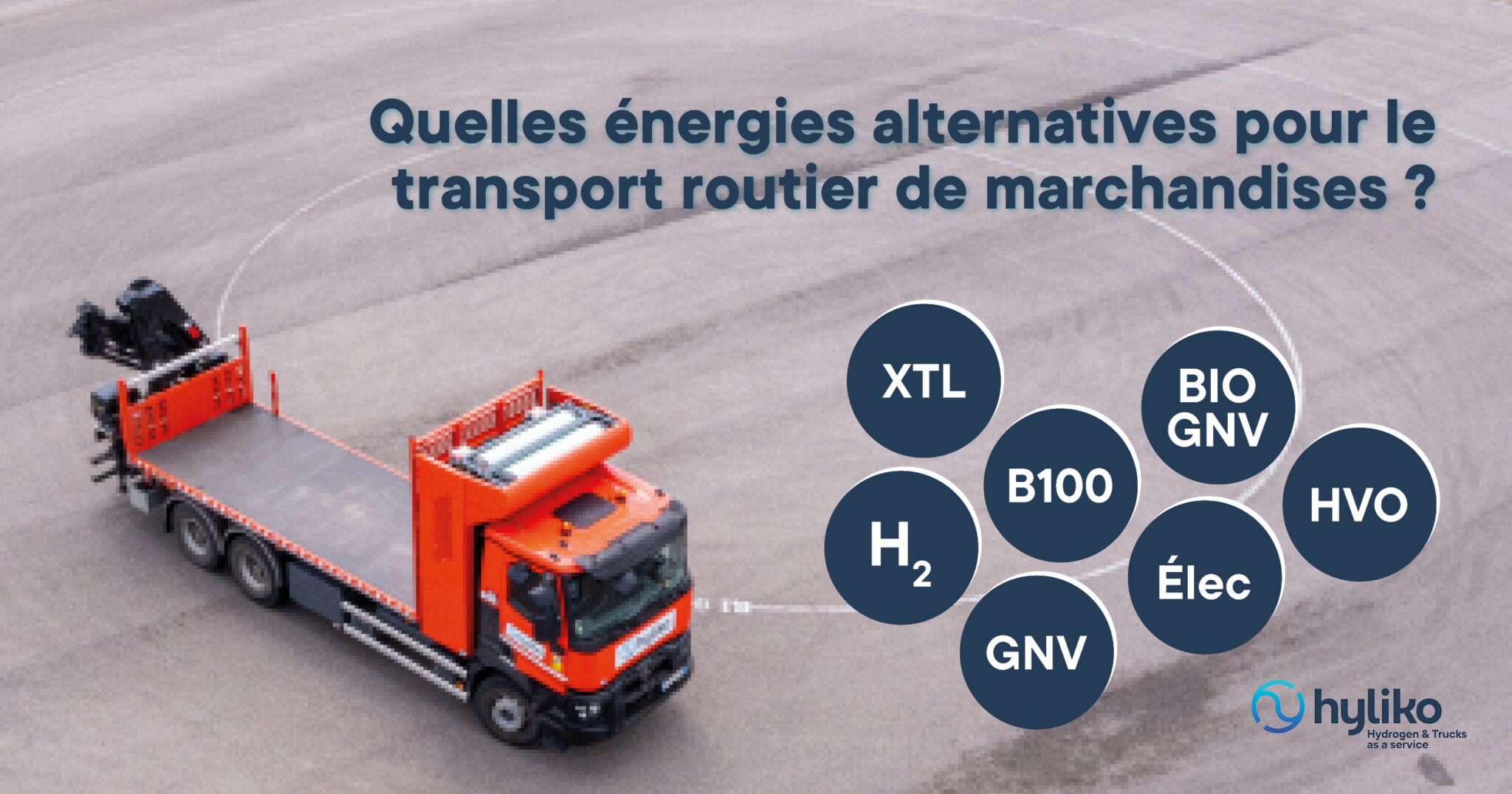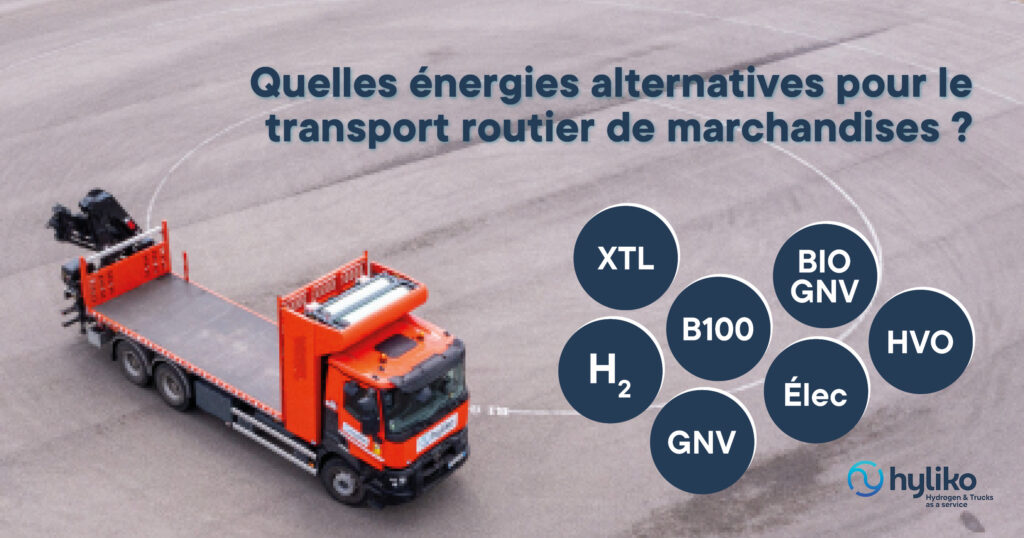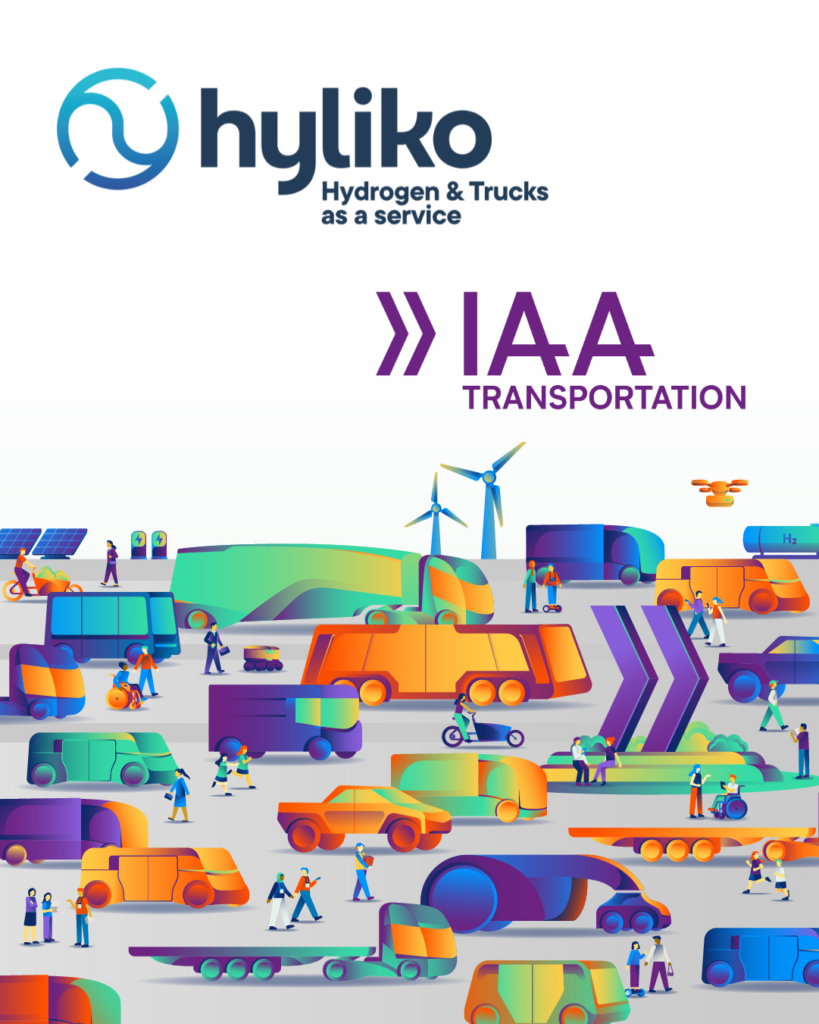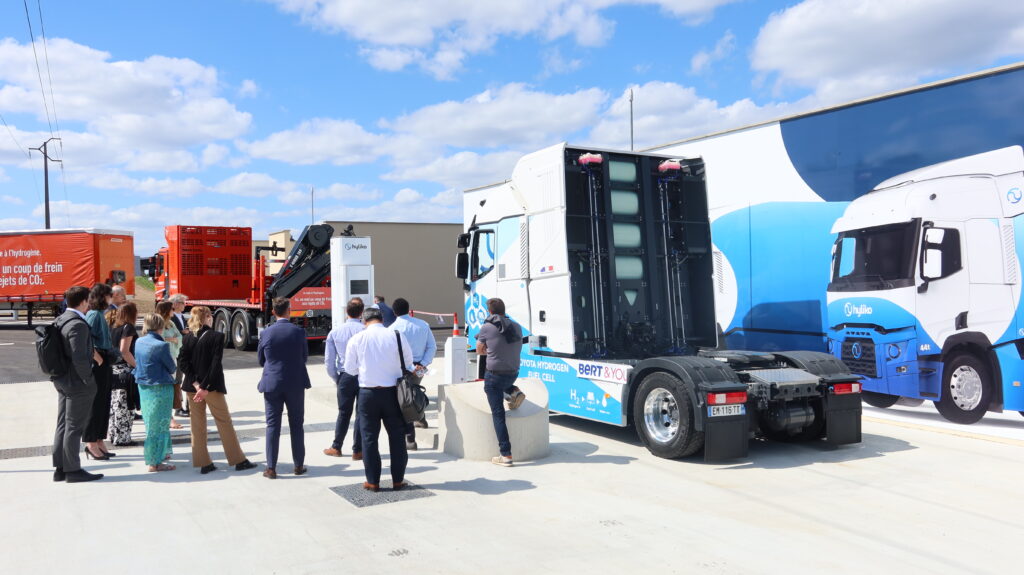Green hydrogen is seen as a key solution for a sustainable energy transition. In France and around the world, hydrogen stations dedicated to mobility are multiplying to meet the growing demand for clean energy for both light and heavy vehicles. With the entry into force of the AFIR (Alternative Fuels Infrastructure Regulation) Directive on 12 October 2023, this phenomenon will accelerate. This European directive requires the deployment of infrastructure for alternative fuels, including hydrogen. The aim is to deploy publicly accessible stations every 200 km along the main routes of the TEN-T network and in major urban centres by 31 December 2030. But how do these stations work and what safety measures are applied in these environments? Hyliko explains in this article.
Why a hydrogen station for trucks?
A hydrogen station, also known as a hydrogen refuelling station, is a fuel distribution infrastructure where hydrogen-powered vehicles can refuel.
To encourage the adoption of this energy source, it is crucial to make long-distance journeys as easy and convenient as diesel, starting with the availability of a sufficient number of filling stations. The industry is working hard to put this in place, with a burgeoning number of hydrogen filling stations along strategic routes for hauliers and other drivers.
Stations also need to be adapted to the specific needs of HGVs: a greater mass of hydrogen on board than in light vehicles, the shortest possible refuelling time, guaranteed accessibility for long vehicles such as tractors fitted with trailers. This means designing stations with large internal stocks of hydrogen, equipped for high-flow distribution to vehicles at 350 bar and 700 bar (heavy-duty vehicles exist with tanks at one or other of these operating pressures), and with access routes and distribution equipment adapted to heavy goods vehicles (such as nozzles placed exclusively on the left-hand side of vehicles, on the driver’s side).
There are different types of stations to suit the needs and uses of users: public, private, fixed, mobile like Atawey, dedicated to heavy vehicles, but also able to serve other types of mobility depending on the pressure levels available.
These stations are public, so as to facilitate the growth of hydrogen mobility and also spread the development costs.
Hyliko, the leader in heavy-duty hydrogen mobility in France, offers a range of services including hydrogen truck hire, fleet management and decarbonisation services and access to a network of green hydrogen filling stations adapted to heavy-duty mobility. To find out more about Hyliko’s hydrogen network, please visit our dedicated page.
How does a hydrogen station work?
1. Manufacturing
Hydrogen for refuelling stations can be delivered from external production sites or, in the most common case, produced on site using an electrolyser. On arrival, the hydrogen is transferred to specific storage facilities such as cylinders, trailers or dedicated tanks.
2. Compression
Hydrogen in its gaseous state has a very low density, which means that it takes up a lot of space for a given mass. To make it easier and more economical to transport and store, it is necessary to increase its density and therefore store more energy in a smaller space.
To be densified, the hydrogen is compressed by applying high levels of pressure, between 450 and 1000 bars. The higher the pressure, the greater the quantity of hydrogen stored in the tank.
Since compression generates heat, a chiller is needed to compensate for this phenomenon and maintain a safe temperature for equipment and users.
3. Hydrogen storage
The compressed hydrogen is then stored in high-pressure buffers. Storage in gaseous form at high pressure (generally 450 or 1000 bars) is the most common, although a technology in liquid form at extremely low temperatures (around -253°C) is the subject of promising research and development.
4. Hydrogen distribution
The refuelling process is fast and similar to that at traditional service stations. There are a few differences between diesel and petrol: the vehicle’s filling unit is the bar, so the fill-up is expressed in kilograms rather than litres.
Here are the main stages: The first stage is the connection between the distribution terminal, also known as the ‘dispenser’, and the vehicle. The driver connects the vehicle to the hydrogen pump using a refuelling nozzle. He presses a button to start the automatic filling procedure. The hydrogen is then transferred from the station’s tank to the vehicle’s tank. This process takes about 20 minutes for a full tank. The cooling of the hydrogen and the outside temperature are factors that influence refuelling time.
L’hydrogène stocké dans le réservoir du véhicule est ensuite converti en électricité par la pile à combustible.
5. Cold block
The operating rules for hydrogen distribution stations prohibit direct compression of the gas into vehicle tanks. The hydrogen stored in the buffers at a higher pressure (500 or 1000 bars) than the vehicle tanks (350 or 700 bars) means that it can be transferred without the need for a compressor during refuelling.
This transfer of hydrogen from the buffer to the vehicle is exothermic, i.e. it gives off heat. Vehicle fuel tanks must not exceed 80°C.
The hydrogen therefore needs to be cooled. Hyliko stations have a cold block to lower the temperature of the hydrogen to between -10°C and -40°C. This action allows rapid refuelling while containing the heat generated by the compression of the gas in the tank to protect it.
In the absence of a hydrogen cooling system, the stations drastically limit the flow of hydrogen transferred to the vehicle in order to restrict the heat in the vehicle’s tank, which significantly extends refuelling times.
The speed at which hydrogen is transferred from the station to the vehicle is controlled by a refuelling protocol. The stations’ cold blocks allow the fastest refuelling protocols to be used.
What are the safety features of a hydrogen station?
There are many misconceptions about hydrogen filling stations. However, these are highly controlled environments with even more advanced security features than a traditional refuelling station.
Safety is an essential aspect covering several dimensions to guarantee the safety of users, the environment and operations.
Here are the main safety measures to be taken at a hydrogen filling station:
• User safety
Users do not need to wear specific personal protective equipment for hydrogen gas, unlike other fuels such as LNG. In an emergency, an intercom is available near the distribution area for any necessary communication. In addition, there are no risks associated with the presence of hydrocarbons on the site, eliminating the danger of slips and the associated chemical risks.
• Environmental safety
Hydrogen stations release no pollutants into the ground, air or wastewater, minimising their environmental impact.
• Antistatic safety
The vehicle does not need to be earthed manually, a task automated by the distributor, simplifying the process for the user.
• Safety of bunkering operations
The filling process is automated, secure and punctuated by leak tests. Infrared communication can be established between the vehicle and the station.
• 24/7 facility monitoring
The stations benefit from continuous monitoring of refuelling zones, pressurised equipment, hydrogen stocks and distribution systems, as well as all kinds of alerts to ensure immediate responsiveness in the event of a problem.
• Advanced safety system
The stations are equipped with an advanced security system. Automated management of excess pressure prevents explosions. It is compulsory to install hydrogen sensors in enclosed spaces and equipment to detect leaks. Outside, audible hydrogen sensors or thermal sensors can be used to detect leaks and, above all, hydrogen fires, which are invisible to the naked eye. These devices are not compulsory, but a few operators, including Hyliko, have them on site. Finally, continuous video surveillance ensures complete monitoring of the facility.
• Regular checks on the installation
A weekly check on proper operation is carried out, either remotely or on site, in accordance with the station’s charter. Hyliko has opted for the second option.
• Emergency stop device
An emergency stop button is available close to the dispenser, similar to other service stations, enabling rapid intervention if necessary.
These measures ensure maximum safety for users, the environment and operations, making hydrogen stations reliable and safe.
Refuelling stations are an essential part of the hydrogen landscape. More and more of them are facilitating the adoption of hydrogen vehicles, which are emerging as the solution of the future for zero-emission mobility. To support this transition, Hyliko and its partners are guaranteeing the widest coverage of green hydrogen in France by opening stations in strategic areas. These ecosystems, linked together at national level and then interconnected with European corridors, enable transport operators to carry out their missions in a low-carbon way.



